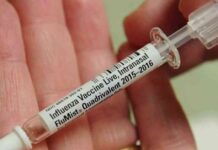Summer is typically a time for relaxation, fun, and enjoying the sunshine. However, this year has brought a new challenge with the surge of COVID-19 cases across the country. As we navigate through this uncertain time, it’s important to be aware of the symptoms of the virus, especially with the emergence of new variants. In this article, we’ll explore the top COVID FLiRT symptom to watch for during the summer surge and what doctors have to say about staying safe.
The current situation with COVID-19 is concerning, with metrics like hospitalizations, emergency room visits, percentage of positive tests, and unfortunately, deaths on the rise. The Centers for Disease Control and Prevention (CDC) has been closely monitoring the situation, and experts are urging caution as we continue to navigate through this challenging time.
Meet the Expert: Thomas Russo, MD
Dr. Thomas Russo, a professor and chief of infectious disease at the University at Buffalo in New York, has been at the forefront of the fight against COVID-19. According to Dr. Russo, the most common COVID variant right now is KP.3.1.1, making up nearly 28 percent of COVID-19 cases in the country. This is followed by KP.3 and LB.1. With the rise of these variants, it’s crucial to be aware of the symptoms associated with COVID-19.
Common COVID Symptoms
COVID-19 symptoms can vary from person to person, but some common ones to watch for include fever or chills, cough, shortness of breath or difficulty breathing, sore throat, congestion or runny nose, new loss of taste or smell, fatigue, muscle or body aches, headache, and nausea or vomiting. Dr. Russo notes that respiratory tract symptoms are often prevalent in younger individuals who are not in the high-risk category.
When it comes to the newer COVID variants, symptoms have remained consistent, with many people experiencing a sore throat, runny nose, fatigue, and a general feeling of being unwell. Dr. Russo warns that those who have not been vaccinated or have not yet been infected may experience more severe symptoms, including fever and flu-like syndrome.
Global Impact
The surge in COVID-19 cases is not limited to the United States. Maria Van Kerkhove, technical lead for COVID at the World Health Organization, recently highlighted the global impact of the virus. In Europe, over 20 percent of COVID-19 tests are coming back positive, indicating a significant spread of the virus. Wastewater testing has shown even higher rates of infection, suggesting that there may be two to 20 times more cases than reported.
The rise in cases worldwide underscores the importance of taking precautions and staying informed about the latest developments in the fight against COVID-19. As we face this ongoing challenge, it’s crucial to prioritize safety and follow guidelines from health experts to protect ourselves and our communities.
New Vaccine Approval
In an effort to combat the spread of COVID-19 and its variants, a new COVID-19 vaccine was approved on August 22. While this updated vaccine has not yet been widely distributed, it is expected to be available in pharmacies soon. Dr. Russo advises that individuals in the low-risk category or those who have recently been infected should wait to get vaccinated with the new vaccine.
For high-risk individuals who have not received the previous vaccine and anticipate potential exposure to the virus, such as attending indoor gatherings or traveling for work, Dr. Russo recommends getting the current vaccine. It’s essential to assess your individual risk factors and consult with a healthcare provider to determine the best course of action for vaccination.
In conclusion, the summer surge of COVID-19 presents a significant challenge for individuals and communities across the country. By staying informed about the symptoms of the virus, following safety guidelines, and being proactive about vaccination, we can work together to mitigate the spread of COVID-19 and protect public health. Let’s continue to prioritize safety, support one another, and navigate through this challenging time with resilience and determination.

















